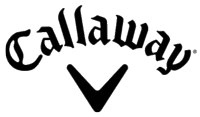NAPLES — I have given over 70,000 lessons in my career, and I have never met anybody that was equally good with their driver and their long and medium irons.
Generally, a golfer is good with one or the other.
There are many reasons for this:
■ The driver is a longer club and is designed to swing on a flatter arc.
■ It has less loft on it and is designed for the golfer to hit up (sweeping swing) on the ball whereas the iron swing is designed to hit “down” on the ball. I can already hear you saying “This guy is crazy. Golf is already hard enough, and this guy wants us to master two swings.”
Another reason we must “hit up” on the driver is because the driver has less loft. When you hit up you add loft. In addition to this, the release with the driver tends to be earlier and wider than the irons. Trackman data tends to back up these findings. The driver swing is on a more “level” approach to the ball and seems to be at least two degrees inside out whereas the iron swing is two degrees outside and comes down on a steeper angler of approach.
With the driver swing, we tend to stay behind the ball with more weight on the back foot. The iron swing we tend to try to “get on top” of the ball and try to cover the ball with our upper body.
Because of the level, inside-out approach, the driver swing has less spin which further creates more distance. It is interesting to note that I did a study of the tour professional at impact, and 84 percent of them had the left arm perfectly lined up with their left shoulder at impact. If this doesn’t mean they are hitting up on the ball, I don’t know what does.
Unfortunately, most amateurs hit their driver with the same swing they use for their irons. Generally, this is a weak, chopping motion across the ball producing a lot of spin and weak shots to the right.
To improve your driving try these tips:
■ Take a wide stance with 65 percent of your weight on your back leg.
■ Position your head behind the ball at address.
■ Position your ball below your left armpit.
■ Make your backswing as wide and as slow as you can without swaying off the ball.
■ Consciously try to “hit up” on the ball as you swing to right center field.
If you leave your tee in the ground after impact, it means you have hit up on the ball. I used to work with the great Canadian golf legend Moe Norman. I once asked him why he always left the tee in the ground after hitting a driver, and he even matter-of-factly said, ”I am not trying to hit the tee, but the ball.” Makes sense to me.



